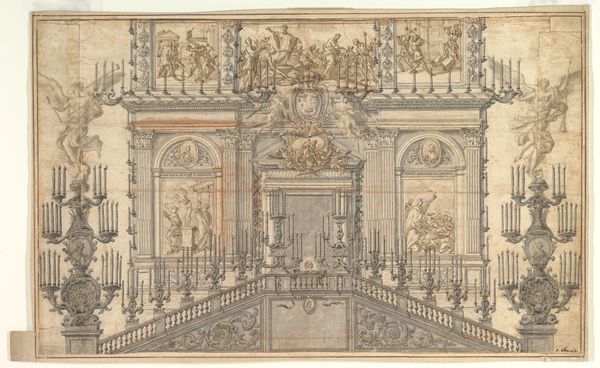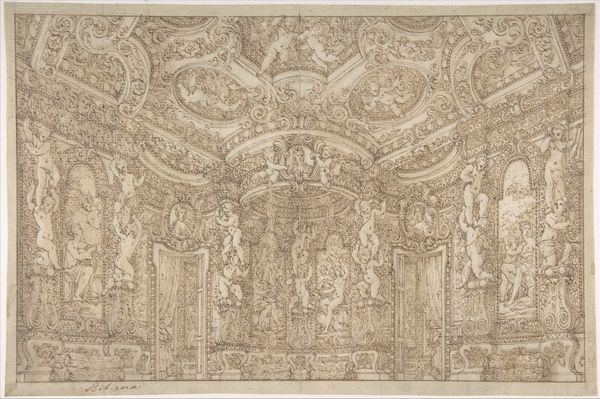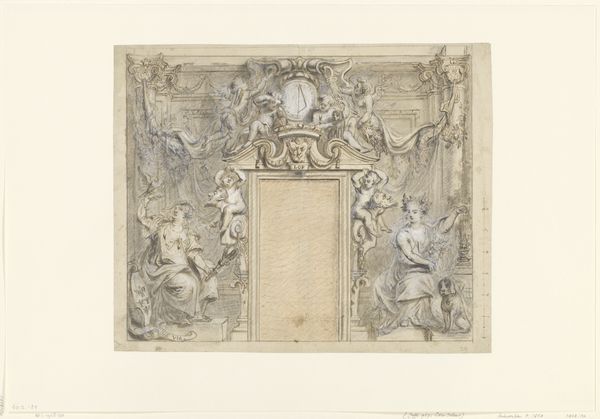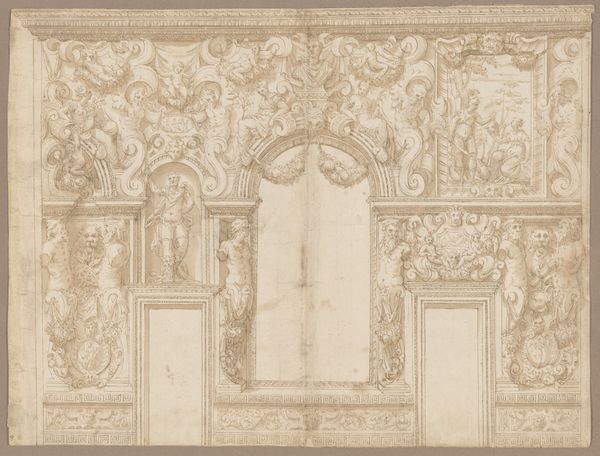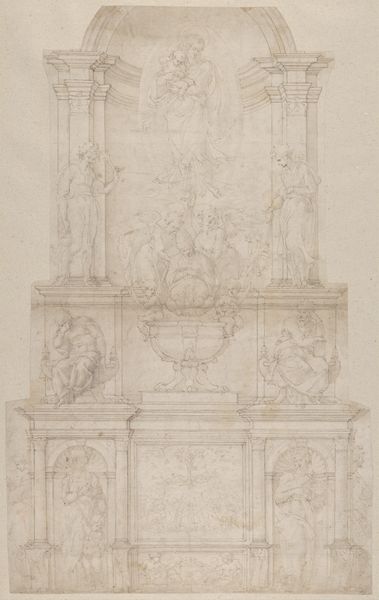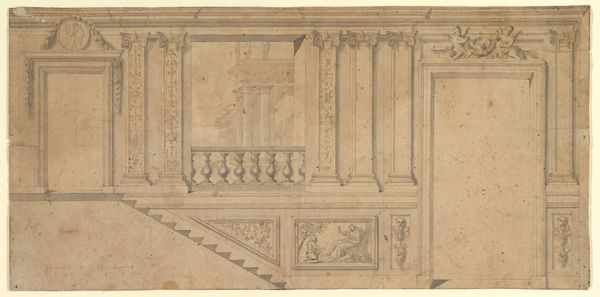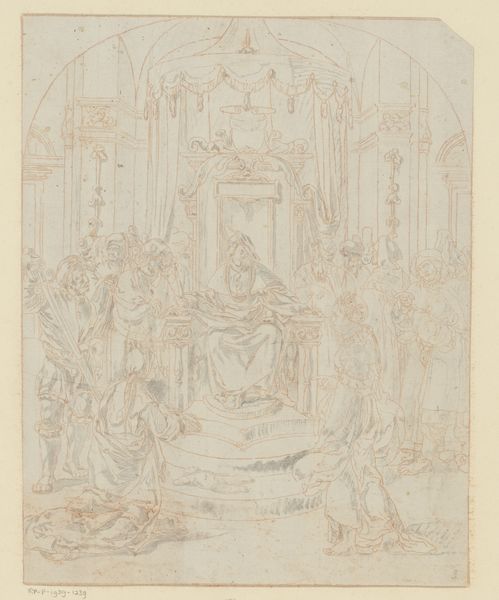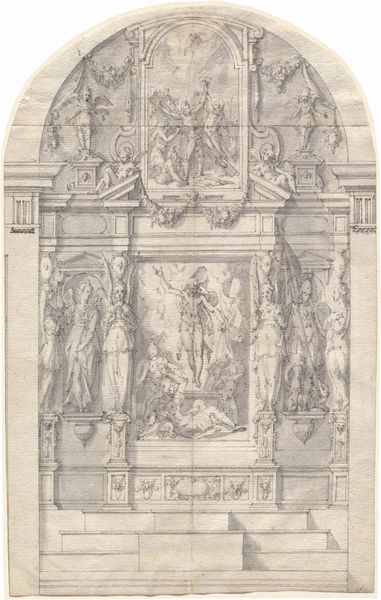
drawing, print, paper, ink, pen, architecture
#
drawing
# print
#
paper
#
11_renaissance
#
ink
#
underpainting
#
men
#
pen
#
history-painting
#
italian-renaissance
#
architecture
Dimensions: 260 × 397 mm
Copyright: Public Domain
Editor: This is "Design for a Façade Decoration," a drawing in pen, ink, and paper from around 1548, attributed to the Circle of Girolamo Genga. It looks like a sketch of a building facade, with lots of classical ornamentation. The figures seem almost carved into the design. What do you see in this piece from a historical perspective? Curator: What I see is a fascinating glimpse into the world of Renaissance artistic patronage and public image. A façade wasn't just architecture, it was a statement. Who do you think would commission such an elaborate design? Editor: Well, someone wealthy, probably wanting to display their power or sophistication... a noble family maybe? Curator: Exactly. Now consider the visual language: the classical figures, the elaborate decorations. What do these elements communicate in the context of 16th-century Italy? How would the average person react to such an imposing building? Editor: I guess it connects the commissioner to the glory of ancient Rome, making them seem important. I’d also think that people in the 1500s probably knew these stories a lot better than we do today. But the everyday person might just see it as a powerful statement, not understanding the details but getting the overall message. Curator: Precisely! And who gets to decide what that message *should* be? The artist, the patron, or the viewer? It's a power dynamic constantly being negotiated. Think about where this facade is located in the city. How does it contribute to or challenge the urban landscape? Who is included and excluded by its presence? Editor: I never thought about it that way before. It’s not just about aesthetics, but how it functions as a symbol of power and social status. Thank you, it completely changed my approach to looking at this sketch! Curator: My pleasure. It’s crucial to see beyond the beautiful lines and ask: who is this *for*, and what work is it *doing* in the world?
Comments
No comments
Be the first to comment and join the conversation on the ultimate creative platform.
